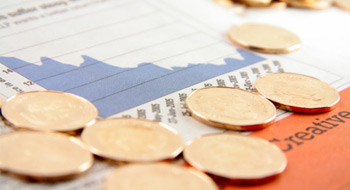

Canada has climbed out of the recession that nudged the economy into reverse over the first half of 2015, but a rebound in growth during the third quarter has already shown signs of lost momentum.
Statistics Canada says Tuesday that the GDP grew at an annualized rate of 2.3% during the three-month period that ended in September. The GDP received boosts from improved performances in exports and household consumption, the federal agency says.
But the economy contracted by 0.5% at a non-annualized rate in September — a decrease largely linked to the country’s hobbled manufacturing and natural resources sectors. That September reading followed GDP growth at a non-annualized pace of 0.3% in July and 0.1% in August.
Earlier this year, the economy fell into the technical definition of a recession after it recoiled for two straight quarters. It decreased by a revised annual pace of 0.7% over the first three months of 2015, and again by 0.3% in the second quarter.
The overall third-quarter reading came in close to expectations. Economists had expected growth of 2.4% for the third quarter, according to Thomson Reuters.
Statistics Canada says the economy registered 2.7% growth in the exports of goods, led by increases in motor vehicles and parts as well as consumer goods and crude-oil bitumen. Household spending, meanwhile, grew by 0.4% in the third quarter, the agency notes.
The economy’s struggles — led by the deep, negative impact of stubbornly low oil and commodity prices — have forced experts to repeatedly downgrade their growth forecasts for Canada.
Last month, the federal government’s fiscal and economic update contained average forecasts made in October by a group of private-sector economists. They predicted a 1.2% increase in real GDP — a common measure of economic growth — for 2015 as a whole, down from an April estimate of 2%.
In October, the BoC predicted the economy to expand by 2.5% in the third quarter and 1.5% in fourth. The central bank has projected growth of 1.1% for 2015 as a whole and 2% for 2016.
The BoC, which cut its key interest rate twice this year to cushion the economy from the major drop in oil prices, is scheduled to make a rate announcement Wednesday. It is widely expected to hold its trend-setting rate at 0.5%.
The weaker economic conditions have put pressure on the new Liberal government’s election promises, which include big-ticket spending for projects like infrastructure that it says will produce jobs and growth.
Even with billions in spending commitments, the Liberals committed to keep annual deficits under $10 billion over the next two years, generate a shortfall of only $5.7 billion in the third year and balance the books in time for the next election in 2019.
But the Liberals announced in their fiscal update last month that they inherited federal books from the Conservatives that will drive the country billions of dollars deeper in the hole than expected, raising doubts they will meet all their fiscal goals without changing some of their plans.
